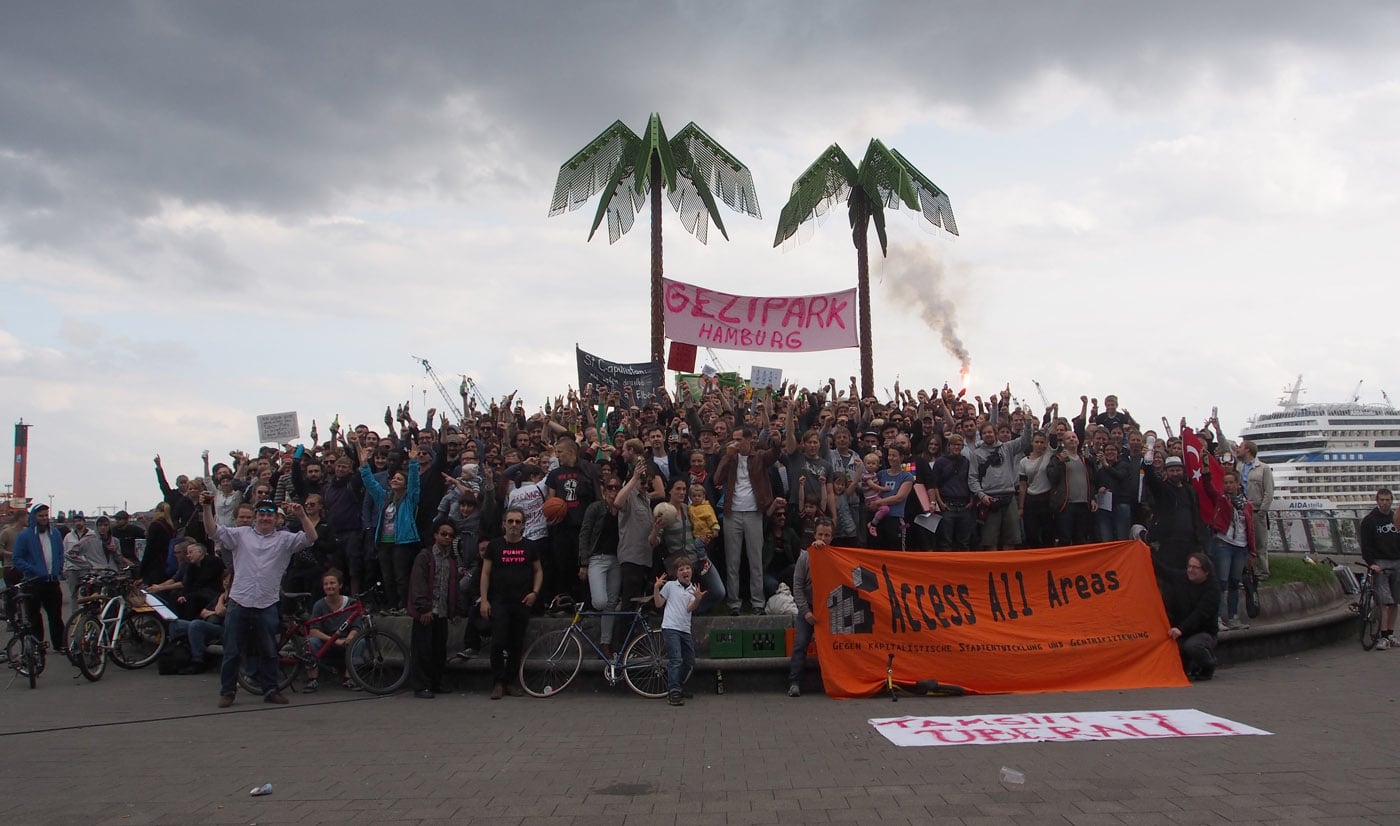In the last several decades we have witnessed a turn towards the citizen, towards the “user” and towards active involvement and participation, both as a general trend in society and more specifically in fields and disciplines such as management, local democracy, art, urban development, cultural politics and the public sphere. 1
- Sørensen, Anne Scott (2016) “Participation” - The new cultural policy and communication agenda, Nordisk kulturpolitisk tidsskrift, 01, Vol. 19
Participation has turned into a, if not hyped-up, then extensively used word in the last twenty years. Part of its extensive distribution has to do with possibilities for interaction and involvement facilitated by various technology and media platforms. Another factor is ideological trends.
As with most trending terms, in line with their increased use, their meanings obscure or turn manifold and heterogeneous, bordering the incomprehensible. Because – what do we mean by “participation”? What does it mean to “take part”? What are the relationships between participation and representation? And what lines can be drawn between participation and pseudo-participation?
In its simplest form, participation means “the action of taking part in something”. Participation is about access, activation and inclusion of new groups in “taking part”. It is about expanding the limits for who gets a say, whose voices are heard, whose actions are recognized, what perspectives and understandings are used in decision-making, i.e. who participates. Thus, participation and inclusion are closely related. Other words with kinship to the term are user-engagement, citizen involvement, agency, co-creation and ownership. They all deal with the concept of autonomy and power, and the distribution of such.
This essay deals with participation narrowed down to the art field, more specifically to participatory art practices. Participatory art practices are practices in which artists either involve “the audience” in their creative processes and mediation or invite and interact with “non-artists” in their artistic production. People other than the artist(s) thus influence the process and the artwork that comes out of it. This essay aims to clarify different uses of the term “participation”, to discuss the motivations behind them, as well as some pitfalls – as a means of exploring the future of participatory art.
Motivations
The reasons for being drawn towards collaborative modes of production or for including new groups in artistic production can be manifold. It can be motivated by a wish to learn from other perspectives and traditions, to (re-)establish a common space for shared social engagement, or to commercially gain from the inclusion, to mention a few. 2 According to Huybrechts, Schepers & Dreessen’s book Participation is Risky. Approaches to Joint Creative Processes, the motivations behind collaborative practices and participation within the art field can be sorted into three groups: (1) where one believes the participation leads to social progress of some sort (then the motivation is social or political), (2) where one is interested in technical or structural differences (then the motivation is a 'better product'), and (3) where one questions or challenges dominant structures and power relations (then the motivation is to engage in cultural criticism). 3 And, I would add, motivations that are exclusively aesthetic, i.e. to explore what kind of aesthetic results come out of collaborative practices. Regardless, participation and collaboration allow the artist to learn from, be challenged by and build upon the insights, experiences and practices of “someone else”.
- Bishop, Claire (2012) The Social Turn: Collaboration and its Discontents. I: Artificial Hells: Participatory Art and the Politics of Spectatorship. Verso Books.
- Huybrechts, L., Schepers, S., & Dreessen, K. (2014) Participation and Risky Trade-offs. In: Huybrechts, L. (ed.) Participation is Risky. Approaches to Joint Creative Processes. Amsterdam: Valiz
Participatory art
It is difficult to talk about participatory art without at least mentioning the term relational aesthetics, coined by Nicholas Bourriaud in his 1998 book of the same title. 4 A much-cited practice illustrating relational aesthetics is artist Rirkrit Tiravanija’s early 1990’s installations, where social events were the actual artwork (being together, sharing soup). However, at some point the term relational aesthetics was more or less replaced by terms such as collaborative, participatory and socially-engaged art. 5
- Bourriaud, Nicolas (2007 [1998]) Relasjonell estetikk. Oslo: Pax Forlag A/S.
- Kester, Grant H. (2011) The One and the Many. Contemporary Collaborative Art in a Global Context. Durham &n London: Duke University Press.
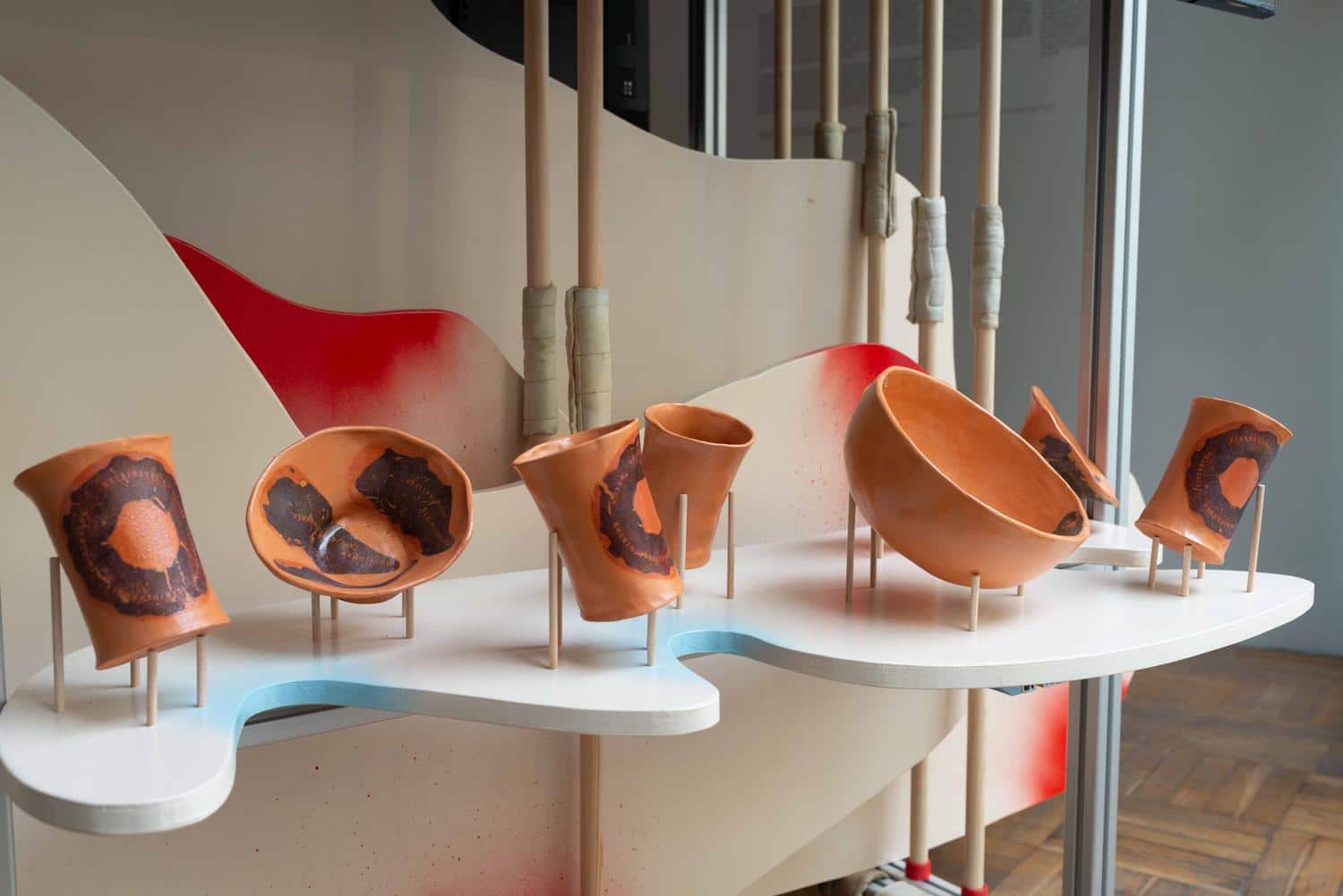
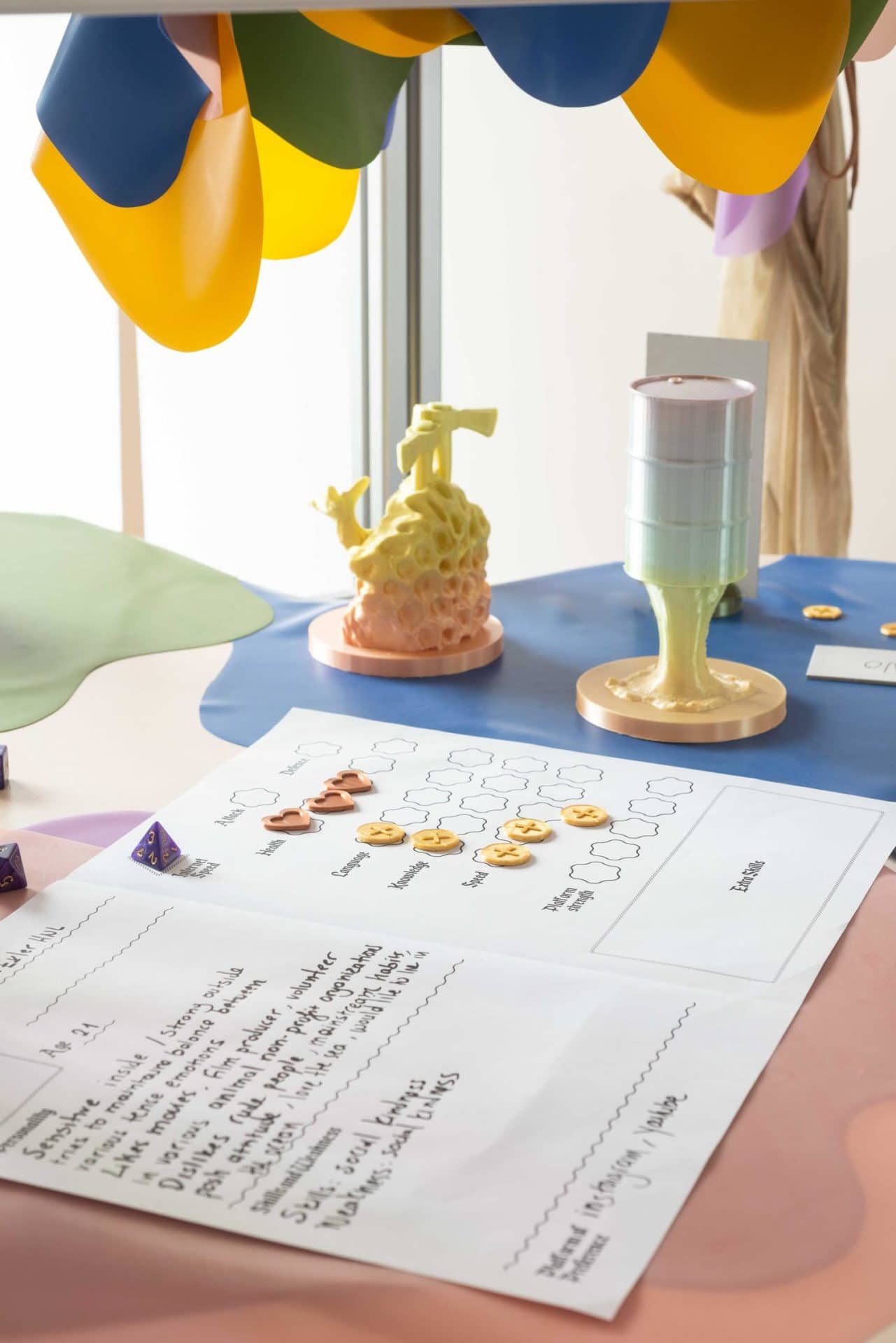
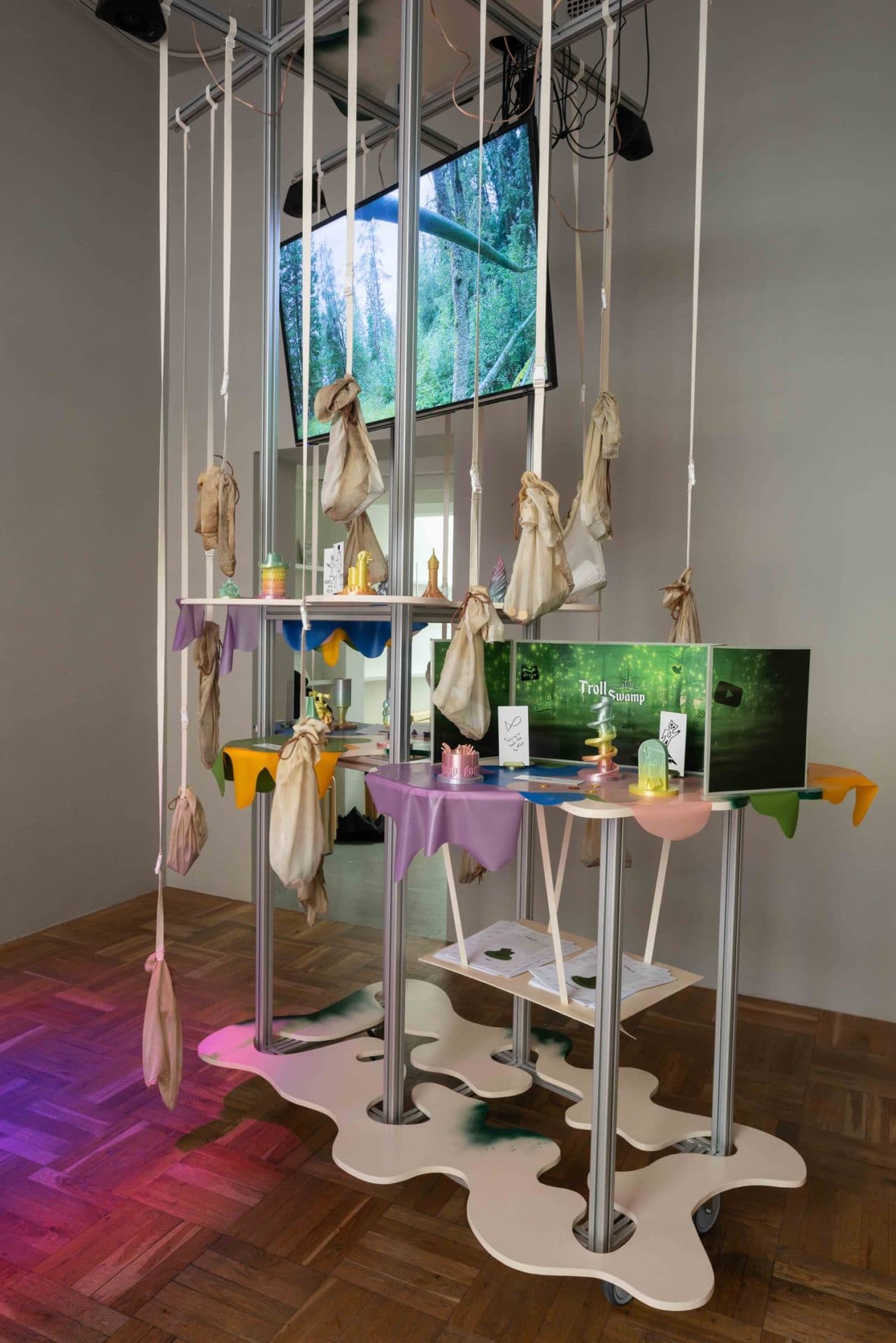
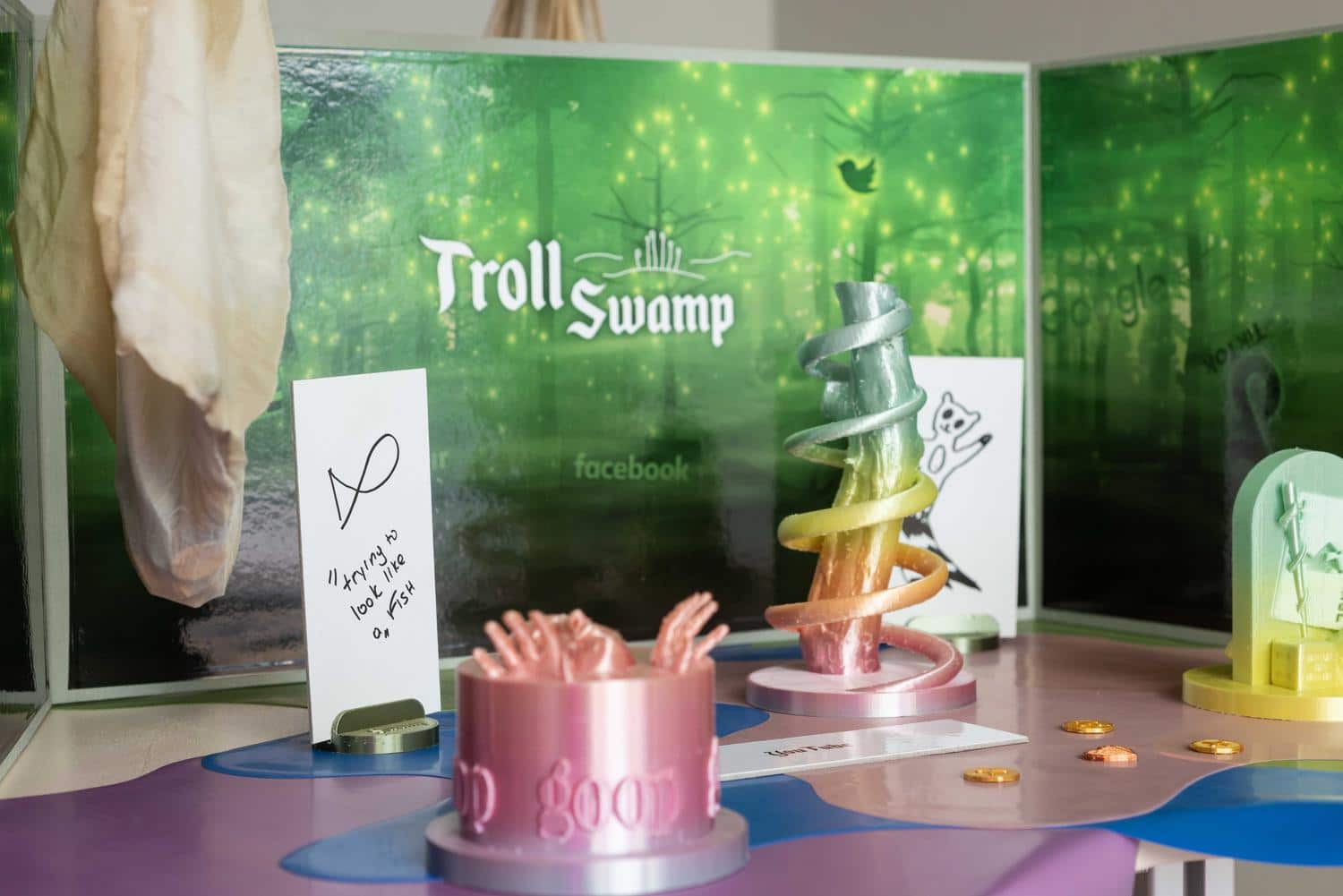
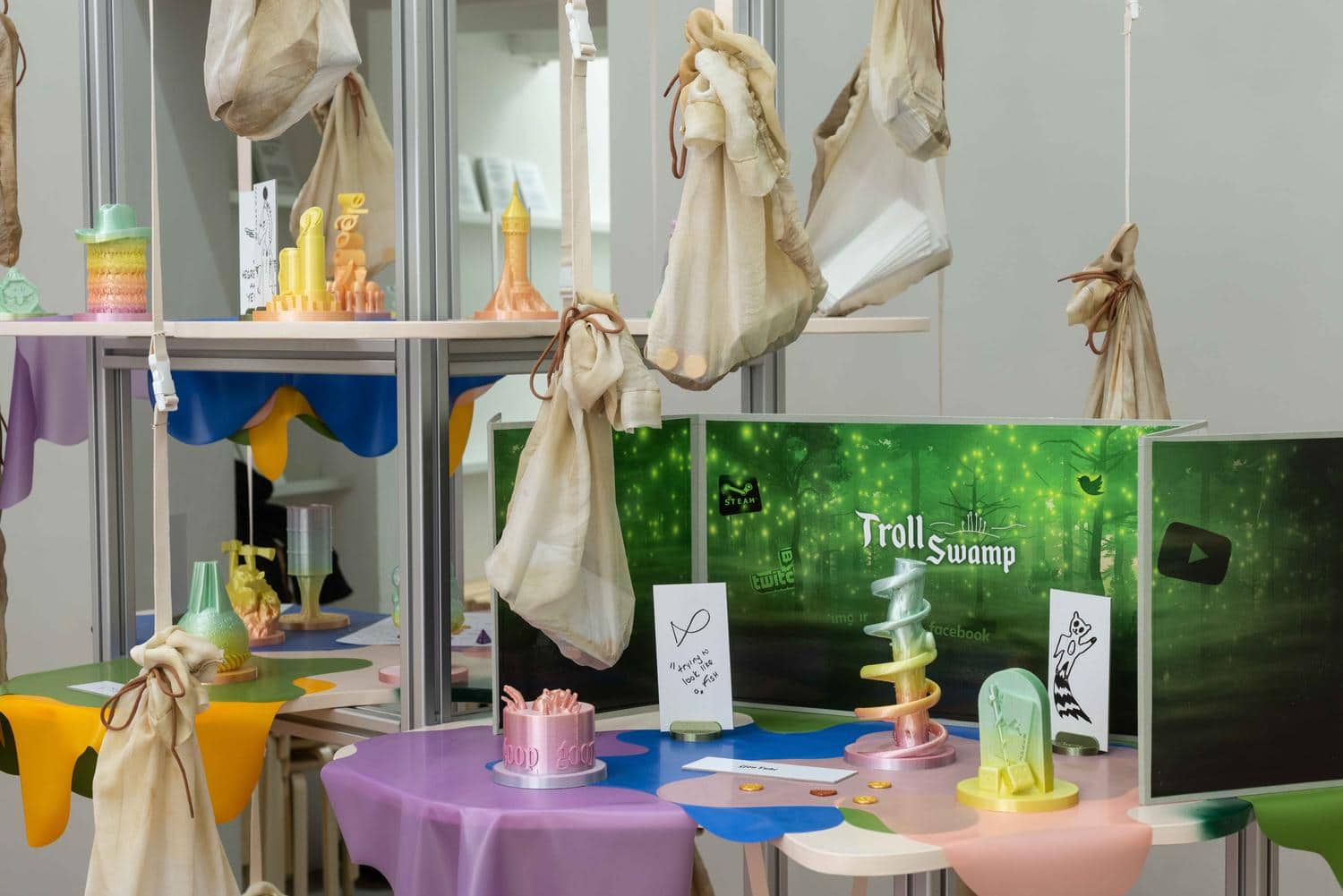
A viable distinction related to these kinds of practices is whether they engage participatory in mediation or in production. Participation during mediation is when the audience is invited to engage in an artwork, installation or a performance that is presented, as in the cases of Tanya Bruguera’s work Surplus Value (2010), Maria Nepomuceno’s Afetosyntetis (2013), or the Mycological Twist’s Troll Swamp (2019). The latter is a gaming session open for everyone to participate, arranged and performed at Entrée in Bergen, co-produced with Bergen Assembly 2019. Based on the role play game Dungeons and Dragons, Troll Swamp is a self-created board game for multiple players. During the playing sessions a Dungeon Master guides the players though the game, confronting the participants with their own digital habits and relations, the goal being to act out various scenarios of net trolling.
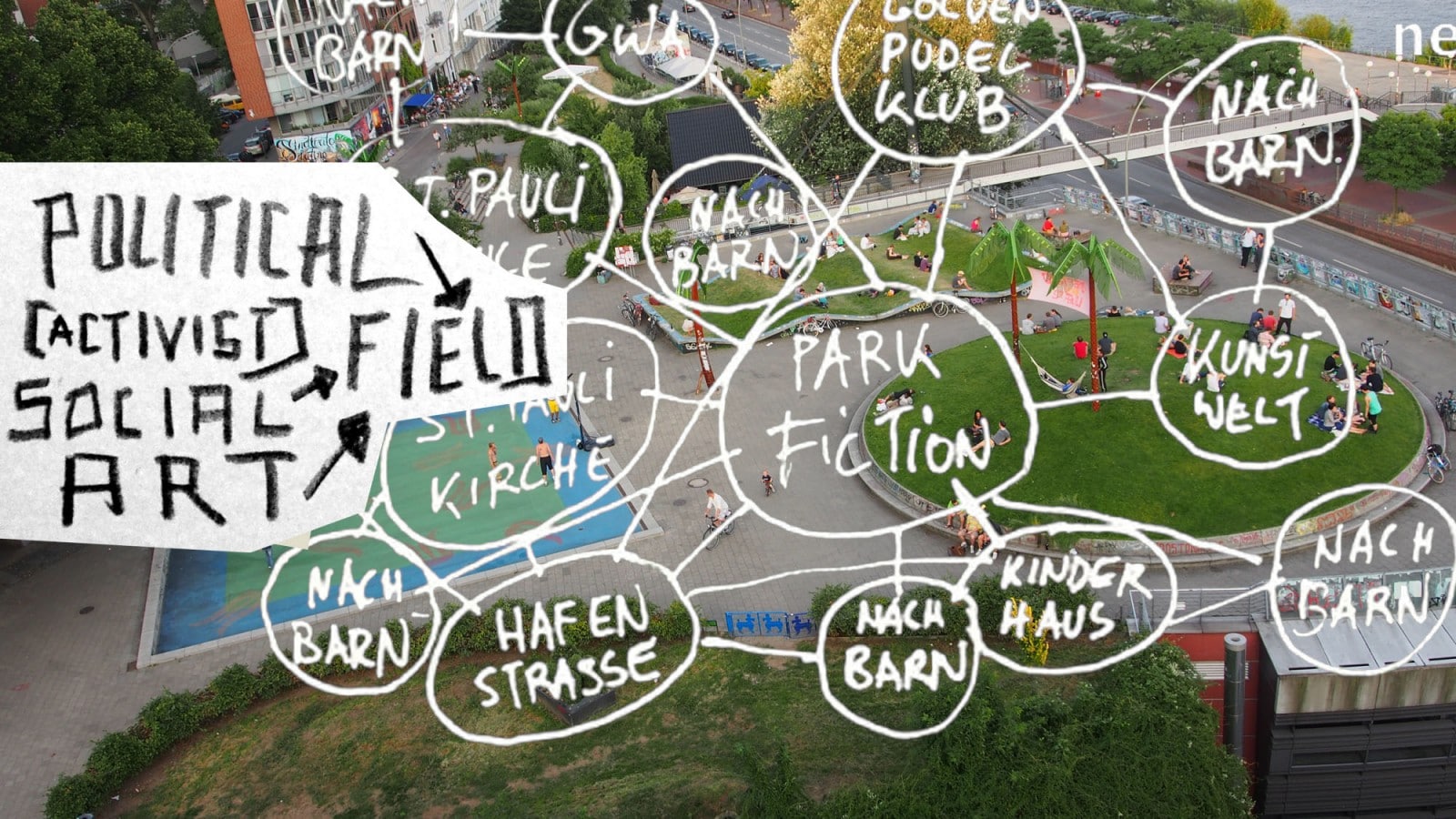
Participation during production is when participants (i.e. non-artists) are invited to collaborate in the production of the artwork itself, i.e. in the process of idea-making, embodiment, completion, and installation. An example of the latter is the project Park Fiction, running in Hamburg since 1995. Park Fiction is a conglomeration of a number of grassroots initiatives for urban development, initially organized by a network in the community with people from different cultural fields (café-owners, children, squatters, musicians etc.), to stop the city council from selling a working-class district to private investors.
The engagement made an impact and the area near the center of Hamburg is today a park designed by residents themselves. Through exhibitions, lectures, conversations, discussions and film-screenings – placed in the intersection between art and activism – new ways of cooperation and new platforms for engagement and change were established. 6
- See http://park-fiction.net/park-fiction-introduction-in-english/ for more information.
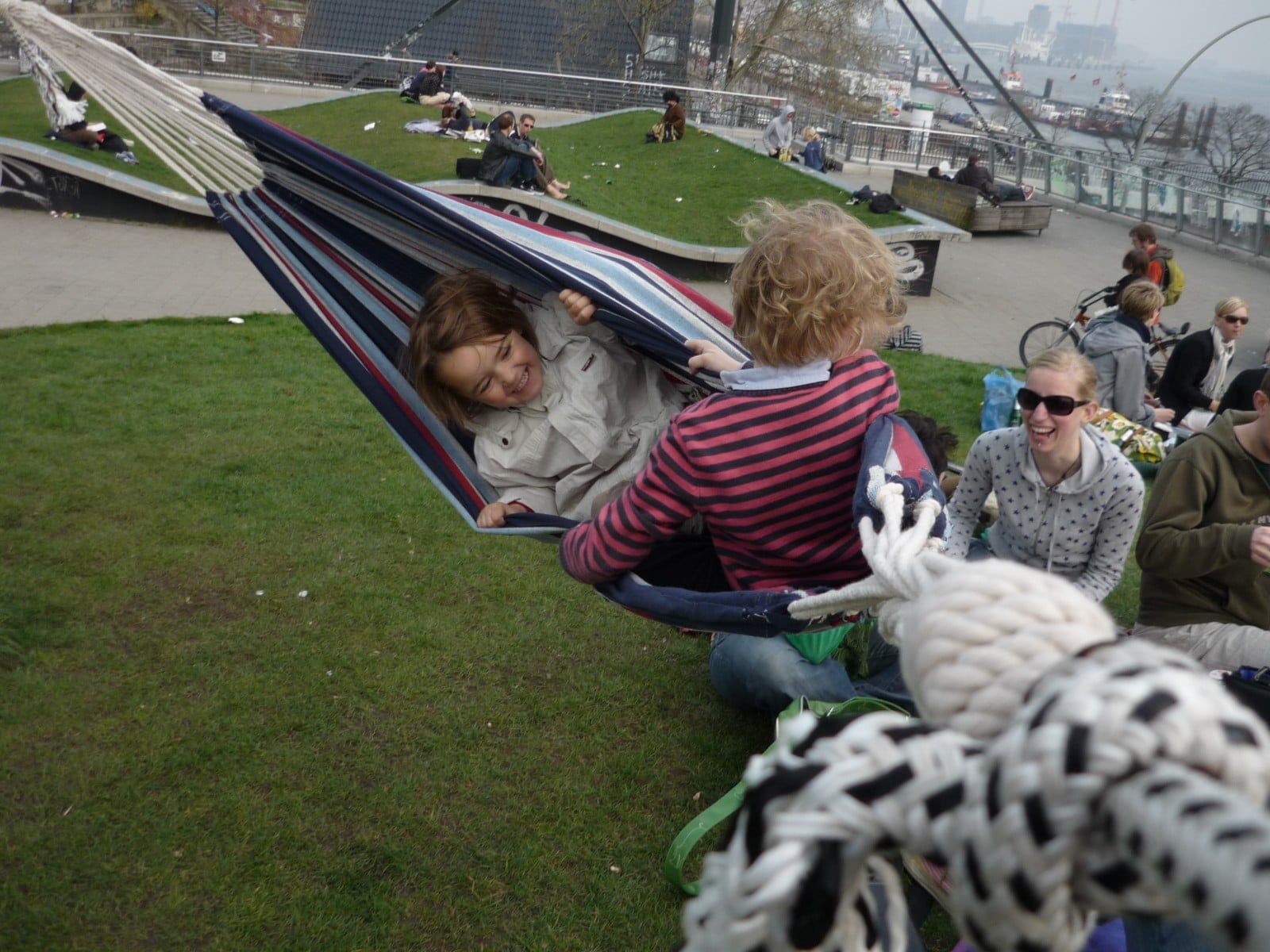


Seen through examples like Park Fiction, participatory and collaborative art practices and happenings have – compared to object-oriented art – helped to open a wealth of new territory for what can be considered art. And they intensify the movements towards an ever-greater preoccupation with what art does, not necessarily limiting the dialogue to what it is.
Praised and criticized
According to art historian Claire Bishop, the popularity of participatory art and collaborative practices can be ascribed to the belief that working with ordinary people equals or more closely resembles democratic political processes. 7 This is based on the belief that participatory art offers a form of collective social experience and that there could be a direct link between participating in art projects and social inclusion. According to Bishop, participation forms part of a larger dominant narrative that traverses modernity: “This desire to activate the audience in participatory art is at the same time a drive to emancipate it from the state of alienation induced by the dominant social order – be this consumer capitalism, totalitarian socialism, or military dictatorship. Beginning from this premise, participatory art aims to restore and realize a communal, collective space of shared social engagement.” 8 Speaking on my own behalf, it is easy to be fascinated by socially inclusive practices, and to acknowledge that embedded in participatory practices and happenings lies a liberating potential for art to matter in new ways. It is also easy to argue for the underlining of the avowal of agency that currently flushes over the art field, as opposed to, in art historian Grant Kester’s words, modernism’s disavowal of agency. 9
- Bishop, Claire (2004) Antagonism and Relational Aesthetics, October, no.110, pp.51-79.
- Bishop 2012, p. 275.
- Kester 2011.
The concept of “avowal of agency” is about acknowledging the role of distributed agency among a wide range of “participants”. However easy it is to support both the idea of avowal of agency and the democratic potential in participatory art practices, participatory art must deal with confrontations as to how to be understood and valued as art as well as its tricky interfaces with the concepts of representation and pseudo-participation.
Is it art?
Bishop among others is critical of how one effectively finds it self-evident that if participatory art projects facilitate new relational meetings and indirectly strengthen the democratic mindset of people, they are successful. 10 She questions the quality of the new relational meetings, and does not acknowledge that these projects and practices are socially strengthening per se, even though intentions might be good. She also stresses that there is confusion as to how to understand and value participatory art as art. 11 She states, “without finding a more nuanced language to address the artistic status of this work, we risk discussing these practices solely in positivist terms, that is, by focusing on demonstrable impact.” 12 Her solution is to keep both the art and the social in continual tension, because it is her opinion that the fruitful examples of participatory art “have constituted a critique of participatory art, rather than upholding an un-problematized equation between artistic and political inclusion.” 13
- Bishop 2004, p. 65.
- Bishop 2004, p. 18.
- Bishop 2004, p. 18.
- Bishop 2012, p. 283.
Referring to projects such as Park Fiction, defining what is art and what is not can be difficult. The same goes for how to value the project as art. However, the art part is nevertheless crucial according to Kester.
“A particular experience of openness is encouraged as participants are implicated in an exchange that is not wholly subsumable to conventional pragmatic demands, but is consciously marked as a form of artistic practice. In fact, it is in part the lack of categorical fixity around art that makes this openness possible.” 14
- Kester 2011, p. 28.
Pseudo-participation
The vague line between participation and pseudo-participation is another challenge that confronts participatory art practices (particularly participation during production). Pseudo-participation is when decisions, plans and works are already made beforehand so that participation is not actually needed to arrive at the eventual outcome. It is when the motivation behind participation, intentionally or unintentionally, is “to do participation,” ticking off that participation happened or when the ones inviting wants to adorn themselves with having engaged in participatory practices.
Curator and art theorist Nora Sternfeld points to this pitfall when speaking of participation understood and practiced merely as interaction. 15 In participation reduced to interaction, the premises for participation is defined in advance, and actual participation and practice turns into taking part in its smallest sense. Most likely participation in this sense contributes to maintain existing power structures, not changing them. According to Sternfeld, participation should to a much larger degree be understood not only as “taking part”, but as both a “way of taking part and of having a part.” In her own words, “Participation is not simply about joining in the game, it is also about having the possibility to question the rules of the game.” 16 Anthropologist Charlotte Bik Bandlien conveys similar thoughts when she discusses the concept of monoculture, and the tension embedded in the way an increasingly globalized art world has incorporated indigenous perspectives and distinctions based on various forms of marginalities. 17 “Inviting practices that challenge the western view of art into the fold, is not the same as letting these practices reconfigure the conceptions of the art institutions, and by this increasing arts potential for cultural criticism.” 18
- Sternfeld, Nora (2012) Playing by the rules of the game. Participation in the Post-Representative museum, CuMMA Papers #1, https://cummastudies.files.wordpress.com/2013/08/cummapapers1_sternfeld.pdf
- Sternfeld 2012, p. 4.
- Bandlien, Charlotte Bik (2020) Kulturproblemet. Kunstkritikk.no. https://kunstkritikk.no/kulturproblemet/
- Bandlien 2020.
As the participatory practices expand, balancing the line between participation and pseudo-participation seems increasingly important.
As for the future, the practices of participatory art are manifold and ongoing, and definitions are constantly being remade. It is thus for the future to tell us how the practices will define themselves in the coming years.
Merete Jonvik is a social anthropologist and sociologist. She has a PhD. in cultural sociology from the University of Stavanger, Norway (2015). She works and lives in Stavanger, as an associate professor at the Department of Media- and Social Sciences at the University of Stavanger. Her research areas are art sociology and cultural sociology, social inequality and urban development.


